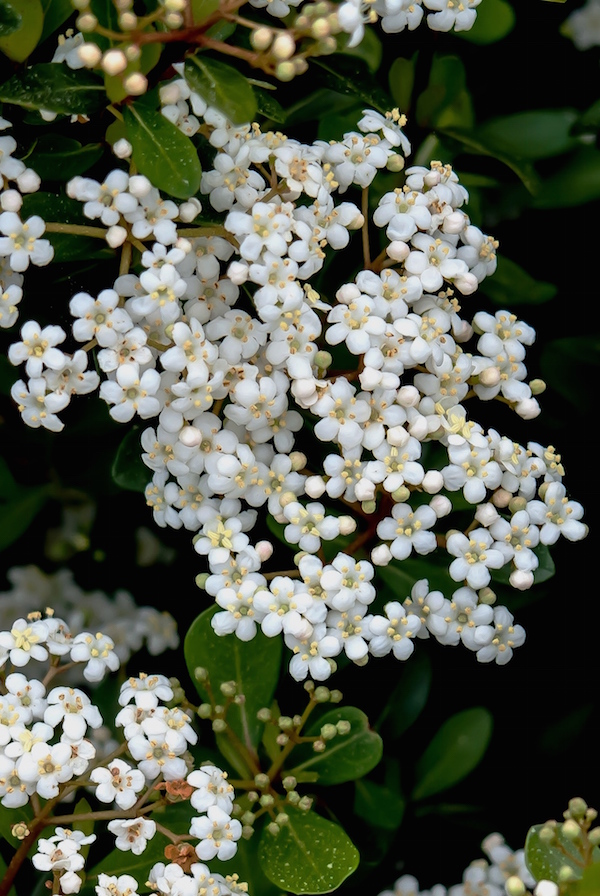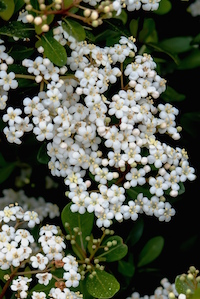It’s been amusing watching visitors get out of their cars and start taking photos of shrubs around the parking lot at the University of Georgia Coastal Georgia Botanical Gardens. Sometimes we even laughingly call these tough-as-nails plants “parking lot shrubs.” I am referring to ‘Mrs. Schiller’s Delight,’ a selection of the native Walter’s viburnum. At the gardens we have viburnums from China, India and Japan, but this small, compact native is one that has to be the ideal bones and structure plant of any garden.
Botanically speaking, this little workhorse is Viburnum obovatum. It is native in four Southeast states: Alabama, Georgia, Florida and South Carolina. Though it is native to the South, it is cold hardy through zone 6. In the wild, the species may look like a tall shrub or small tree, reaching 12 to 15 feet in height. But ‘Mrs. Schillers Delight,’ introduced by nurseryman Steve Reifler in Florida, made a huge impact not only on the landscape trade, but on the nursery industry as well.
‘Mrs. Schiller’s Delight’ reaches about 3 feet tall and is slightly wider. Ours are covered with white flowers that cause everyone to jump out of the car with the camera blazing. Every week I hear from my son who bemoans issues with boxwoods and, like the V8 beverage commercial I think, “Wow, you could have had a ‘Mrs. Schiller’s Delight.’” The same goes for me, because while we have lost dozens of dwarf yaupon hollies in our formal garden due to various water issues, we have only lost ‘Mrs. Schillers Delight’ viburnums to reckless drivers.
In Savannah, Georgia, ours are pretty much evergreen, but in colder areas, they tend to be semievergreen to deciduous. We grow ours in the sweltering hot sun, adjacent to the parking lot and our visitor and education center, but they are very tolerant of shadier locations in the landscape. The white flowers will give way to fruit that ages from red to purple to black and is devoured by birds.
As you might guess by the native region, they do prefer acidic soils, much like the azalea. Though they are found in the wild in moist, almost bog-like conditions, they will thrive in fertile soil and become quite drought tolerant once established. Though I have facetiously touted them as the parking lot plant, they certainly have a lot of landscape potential. We’ve clustered them around the taller, conical-shaped oak-leaf hollies and at the base of palms. We are using them in partnership with podocarpus or Japanese yew and surround them with seasonal color. The ‘Mrs. Schiller’s Delight’ viburnum is a very versatile plant and, while the birds may love the fruit, you may want to celebrate the fact that the plant itself is not normally on the local deer menu.
Spring planting season is arriving early in much of the country, and when it shows up in your area, consider using this little, native selection as a foundation plant for your home. You will find it easy to grow, requiring practically no maintenance, and you’ll be rewarded with a blanket of welcoming, white flowers next year. Follow me on Twitter @CGBGgardenguru.
Follow me on Twitter @CGBGgardenguru.








